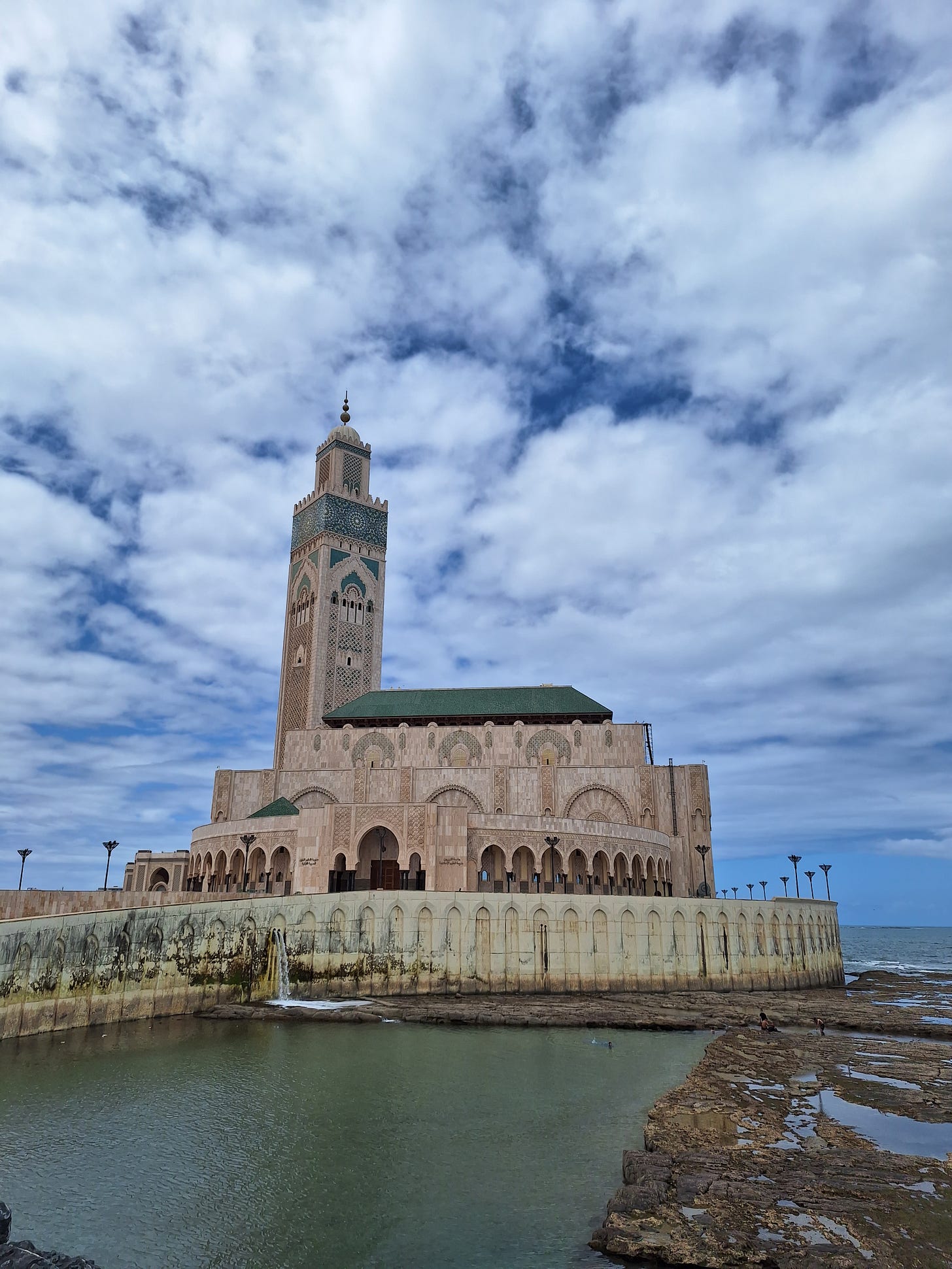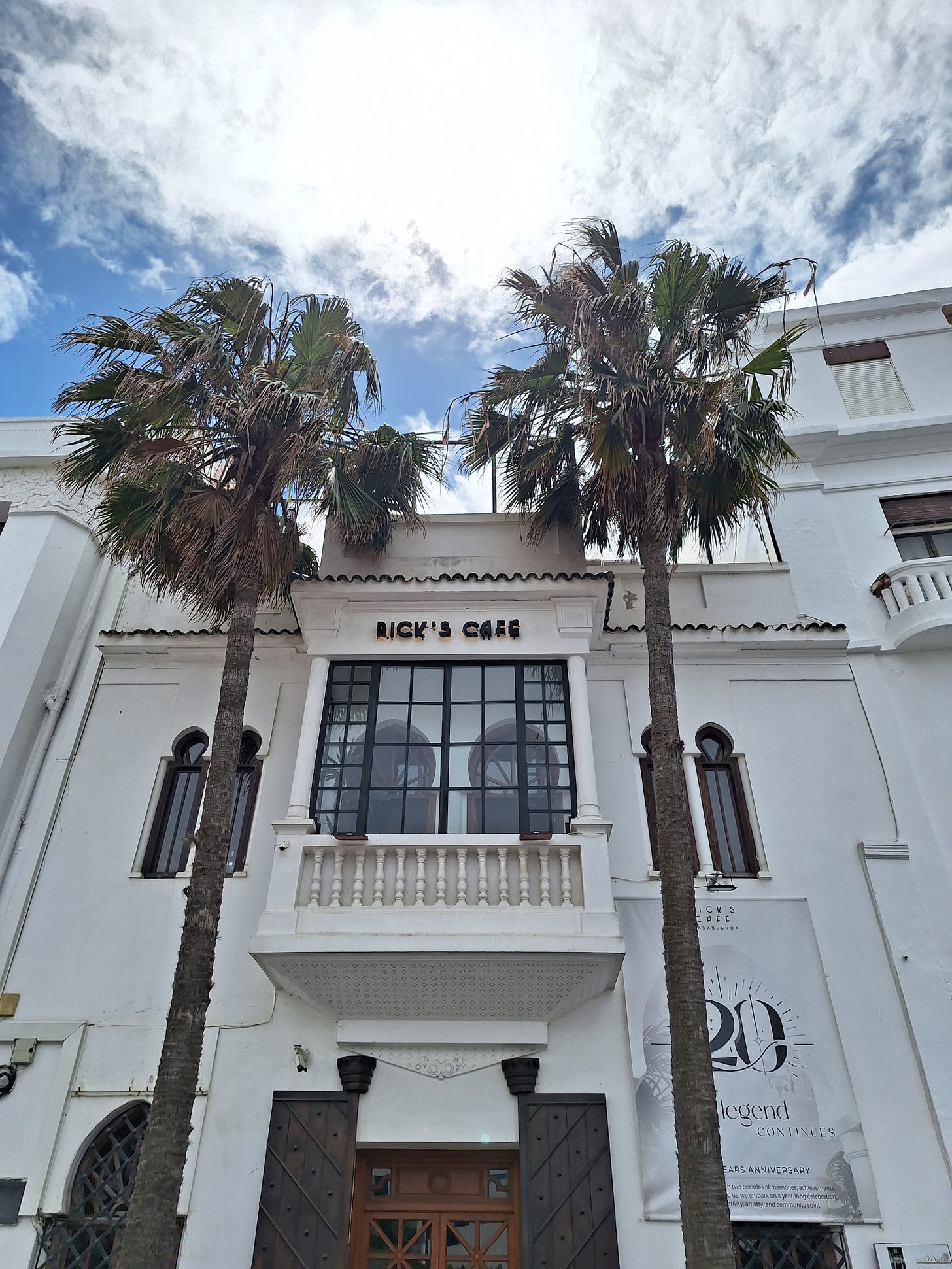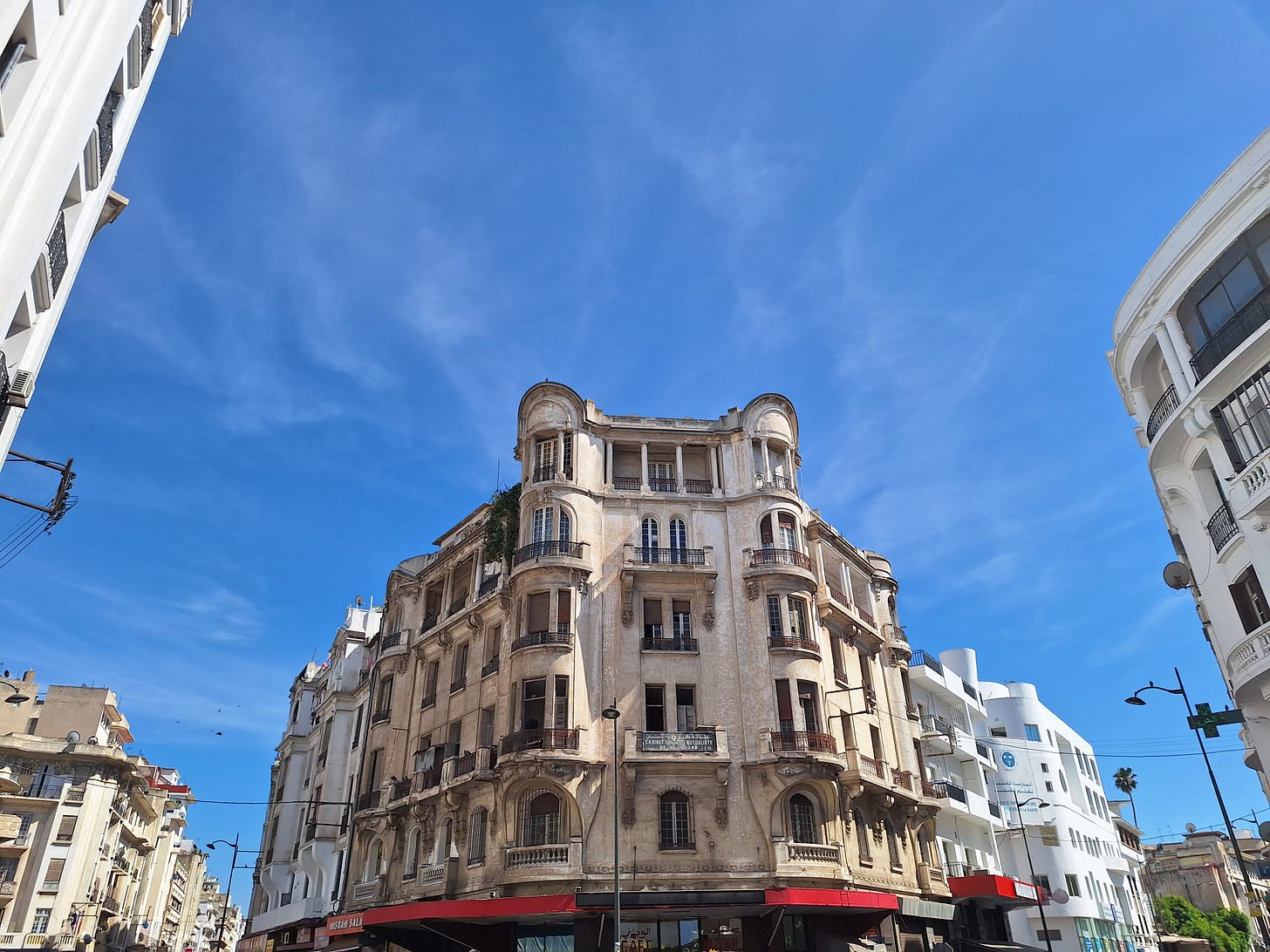Casablanca Diaries: Something from nothing
Mosques, movies and tolerance in Morocco's biggest city
When I arrived in Casablanca I was happy, happy not to be in Marrakesh. Casablanca is much bigger than Marrakesh and yet nobody visits. There are plenty of Moroccans in Casablanca - it’s their biggest city - but hardly any foreigners.
Like many large industrial cities Casablanca is much more interesting for those who live there than those who visit. Guides in Marrakesh told me that I would not like Casablanca, that there was nothing to do there. This meant, obviously, that there was less to do than in Marrakesh, which was fine by me. Marrakesh had left me spinning and discombobulated and I was fine with having less to do.
Fine that is until I arrived and realised I had a day and a half to kill and I wanted nothing more than something to do. Thankfully “nothing to do” is just slander from those in the south of Morocco. In Casablanca there is plenty to do - as long as you like mosques.
Or just the one mosque, actually. The Hassan II Mosque specifically. This one mosque is enough because it’s absolutely massive. I mean, properly big. The second largest functioning mosque in Africa and the fourteenth biggest in the world. The most remarkable thing about that second statistic is that it doesn’t seem possible for there to be thirteen mosques that are bigger.
It looks so big because it sits right on the Corniche, with the Atlantic as its never-ending, forbidding backdrop. If it were in the middle of the city like Sagrada Família is in Barcelona or the Duomo in Milan it would still look huge, of course, its highest point would still be 210 metres up in the air. But it would look slightly less huge because there would be other tall buildings around it, ruining the perspective. All around the Hassan II Mosque is the Atlantic and the Corniche and the most notable thing about both of these is that they are flat.
Well, the Atlantic on the day I visit is choppy as anything, actually, but the waves are still just frothy nothings when compared with the enormous devout structure nearby.
Here’s a statistic that is so ridiculous and hard to picture, it is, in essence, meaningless. 105,000 worshippers can gather together for prayer at the Mosque at any one time. Wembley Stadium, London’s mega-arena that hosts football, rugby, boxing and, on occasion, Taylor Swift, has a maximum of 90,000.
The thing that’s so mind-boggling about this is though the building and its surrounding complex is huge, it doesn’t look that huge. It certainly doesn’t seem capable of holding that many people. Wembley looks like 90,000 people can bounce around it and still have room for a popstar or two. 25,000 of the worshippers that can gather at the Mosque can be inside the building. All that this proves to me is that I find it impossible to visualise large numbers.
Casablanca, when you first think of it, brings to mind, well, Casablanca. There’s Casablanca the city and Casablanca the movie. How similar are they? How much is one based on the other?
Well, there is a Rick’s Café in the real Casablanca. There is one problem though - it was built after the movie. Way after, actually. Kathy Kriger, a former American attaché to Morocco, opened it in 2004 to pay tribute to Humphrey Bogart’s old haunt.
Though set in the city, Casablanca was filmed solely in the United States. In all likelihood, if Casablanca wasn’t called Casablanca we probably wouldn’t pay any attention to where it’s set, to Casablanca. But they went with that as the name and now this big Moroccan city on the edge of a continent brings to mind one of the greatest pieces of cinema ever made.
There is some movie grandeur to the place, but it’s faded. The French left behind some Art Nouveau, some Art Deco, but the buildings built in these styles have been, well, left behind. Paint peels and cracks. Certain parts of the city have a windblown, run-down feel.
In the Arab League Park, we cause a stir. According to my guide, a bored-looking and sullen man in his late twenties who came highly reviewed, the park has different sections reserved for different groups of people. Parts are for families, parts are for teenagers, and so on.
In one we see young couples sitting talking. One young couple are kissing. The girl notices us noticing her. She is clearly ashamed. She hides her face and begins to cry.
“Ah, she saw me kissing him,” our guide says, managing to look both amused and serious at the same time.
The walking tour is scheduled for three and a half hours, an unimaginably long time. It must be a mistake, the two American women and I agree before our guide trots across the road to meet us. It’s not. This is not a walking tour but rather an ambling, argument-filled tour filled with many digressions and pauses. Our guide is either on the phone or pointing out a mistake we have made.
The two women want to book a tour inside the Mosque and have found one that will pick them up and take them there.
“This will not include the tour into the Mosque,” says the guide.
“It says here that it does,” one of the women shows him her phone.
“Well, it will not. You can only get those tickets at the Mosque.”
“But it says here it will go inside the Mosque.”
I slip away to write a less than excellent review that I will never post. I get three texts from the guide over the next week asking why I have not posted any review at all.
The next day, a better tour. We stand in the “triangle of tolerance.” In a corner of Casablanca, near the Corniche, a church, a synagogue and a mosque stand within yards of each other. It is held up as an example of how peaceful the city can be, how open-minded.
Into my mind come two things: first, the reason why there are so many policemen on the streets of Casablanca. At first this had made the place seem safe, somewhere that I would be less likely to experience crime or violence than a city like Marrakesh. In Marrakesh there are dark alleys and strangers in doorways. In Casablanca there are wide boulevards and men in uniform.
The policemen are there because in 2003 bombs, attached to bombers, exploded across the city. 45, including 11 suicide bombers, were killed. The attackers targeted key points throughout the city, many of which now have policemen stationed outside around the clock.
The second thing that comes to mind is something a fellow day-tripper told me during a trip to the Ourika Valley. “Had you been put off coming to Morocco considering the extremely high terror threat?” she asked over a group dinner.
“I hadn’t known there was an extremely high terror threat,” I replied.
The second, better, tour, ends at the Hassan II Mosque. We don’t go in but do walk around the never-ending grounds. The guide tells us about the French architect who designed the enormous structure. I ask what Moroccans thought about a Frenchman designing such an iconic building, given their colonial history.
“It doesn’t matter what we thought,” he says, “the King commissioned him. He was the King!”
Thank you so much for reading. If you liked this post please do consider becoming a free or paid subscriber to Not That You Asked. Paid subscriptions are just £3.99 a month or £29.99 a year and get you an extra travel diary each month. Or get a huge 75% off your first year by using the button below.









This unlocked a memory from my Africa days. When I lived in Niger there were super cheap flights to the US that had 1+day layovers in Casablanca. The first thing I would do when I landed was find taxi that would take me to the Mcdonald’s on the Corniche with a view of the ocean & a that enormous Mosque.
Witty as always, you had me chuckling more than once. I now have this image of a towering mosque in my head - well done making us feel like we're right there with you!